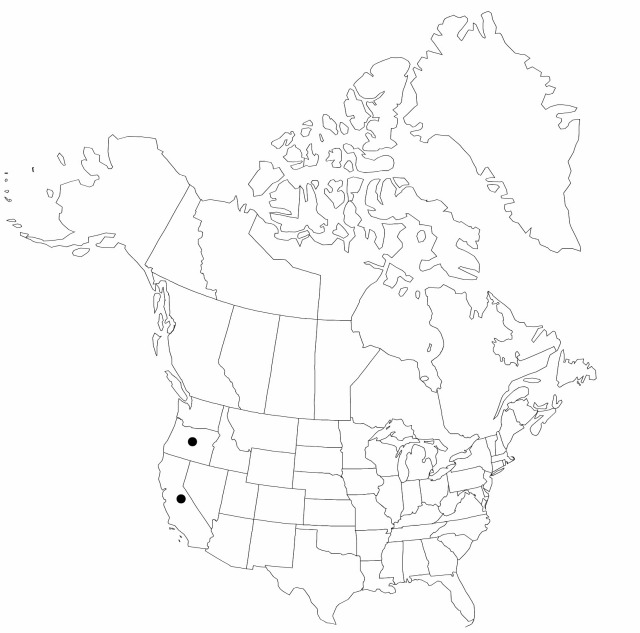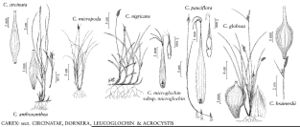Carex brainerdii
Bull. Torrey Bot. Club 40: 534. 1913.
Plants densely to loosely cespitose; rhizomes arching, dark reddish-brown, 0–5 mm, slender. Culms 6–34 cm, scabrous distally; bases weakly or not fibrous. Leaf-blades pale green or glaucous, equaling or usually exceeding stems, 1.8–3.8 mm wide, coriaceous, glabrous abaxially, glabrous or scabrous adaxially. Inflorescences with both staminate and pistillate spikes; peduncles of basal spikes erect, short, stout; peduncles of terminal staminate spikes 2–2.5 mm; proximal nonbasal bracts leaflike, equaling or slightly exceeding inflorescences. Spikes: proximal pistillate spikes 2–6 (basal spikes 1–4); cauline spikes overlapping, with 1–4 perigynia; terminal staminate spikes 5.8–12.7 × 1.5–2.2 mm. Scales: pistillate scales reddish-brown, with similarly colored or narrow white margins, ovate, 3.6–6 × 1.2–2.2 mm, apex cuspidate to acuminate (awned on some basal spikes); staminate scales lanceolate, 3.7–5.9 × 1.4–2.2 mm, apex acute to acuminate. Anthers 2.3–3.3 mm. Perigynia green, often with reddish-brown tinge, 12–15veined, conspicuous to at least mid body, ellipsoid, 4–5.3 × 1.4–2.2 mm; beak often bent, occasionally straight, pale green, 0.8–1.9 mm, ciliate-serrulate, apical teeth 0.2–0.5 mm. Stigmas 3. Achenes brown, ellipsoid, obtusely trigonous in cross-section, 2.1–2.6 × 1.3–2.1 mm.
Phenology: Fruiting late May–late Jul.
Habitat: Dry, rocky, open coniferous woodlands on mountains
Elevation: 600–2800 m
Distribution

Calif., Oreg.
Discussion
Selected References
None.
Lower Taxa
"shortened" is not a number.
